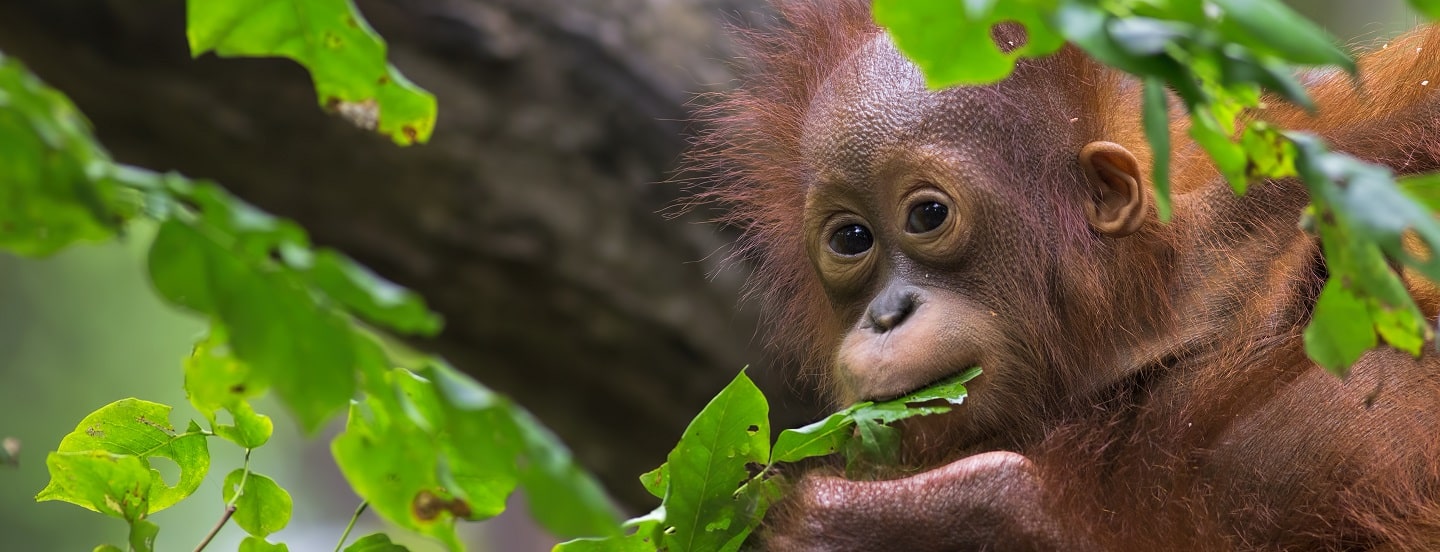For the First Time, Wild Orangutans Discovered to Self-Medicate
Despite our advances in technology and medicine, we seem to be fighting a never-ending battle against a number of diseases and ailments. As viruses become more complex and bacteria become resistant to antibiotics, it seems that the lab-made drugs we have become so dependent on may no longer provide the cures we need. Perhaps this is why we are now turning to nature in the hope that there may be a remedy tucked away somewhere in a remote tropical rainforest.
It could be that our closest living relatives, non-human primates, hold some of the answers we seek. Many species including chimpanzees make use of the natural resources in their habitats to self-medicate and improve their own health.
According to reports, animals as simple as a fruit fly are able to be their own pharmacists. Now, this property has been observed in wild orang-utans. Not only that, but this is the first time it has been proven that any great ape – including both chimpanzees and bonobos – uses deliberate external self-medication.
The apes were first observed chewing leaves and then rubbing the lather formed due to the saponins released on them a few
years ago. So far it has only been reported in the Bornean orangutan, and not in either of the other two species of the Asian great apes. Initially, the plant they were using was misidentified as being Commelina, but further and more detailed observations showed that it was actually a species known as Dracaena cantleyi.
Its leaves contain saponin, a chemical compound that generally makes them bitter and unattractive as a food source. Saponin foams when agitated and, despite its bitterness, scientists have observed Bornean orangutans chewing D. cantleyi leaves and making a soapy lather that they then spread on their skin.
The orangutans spit out any leaves they didn’t apply to their skin, which made scientists believe they weren’t simply eating them. But they didn’t know for sure if D. cantleyi had any medicinal properties that would help explain the behavior.
To answer this question, a team of researchers from various institutions around the work set to work to figure out if the plant contained anything that might explain why orangutans are braving its bitter taste to make it into a salve.
Their pharmacological analysis indicated D. cantleyi has anti-inflammatory properties. Most orangutans observed using it were females who spread it onto their arms, and the researchers suggest they may have been using it to treat arms that became sore from carrying offspring.
“The fact that local people use the crushed leaves for sore muscles and joints further supports the concept that orang-utans would use it to treat similar problems,” the researchers write in their study. “Local indigenous people in Borneo, for example, use it to treat pain in their arms after a stroke, for muscular pain, and for sore bones and swellings.”
“This finding is also important for studies of ethno-medicine, as it is known that indigenous communities obtain knowledge of medicinal plants through observing their use by sick animals.”
This research holds the promise of endless possibilities and by looking at the specific items used by primates and other organisms for self-medication we can then identify whether their chemical compositions would be suitable for curing or aiding the treatment of human diseases and illnesses.































